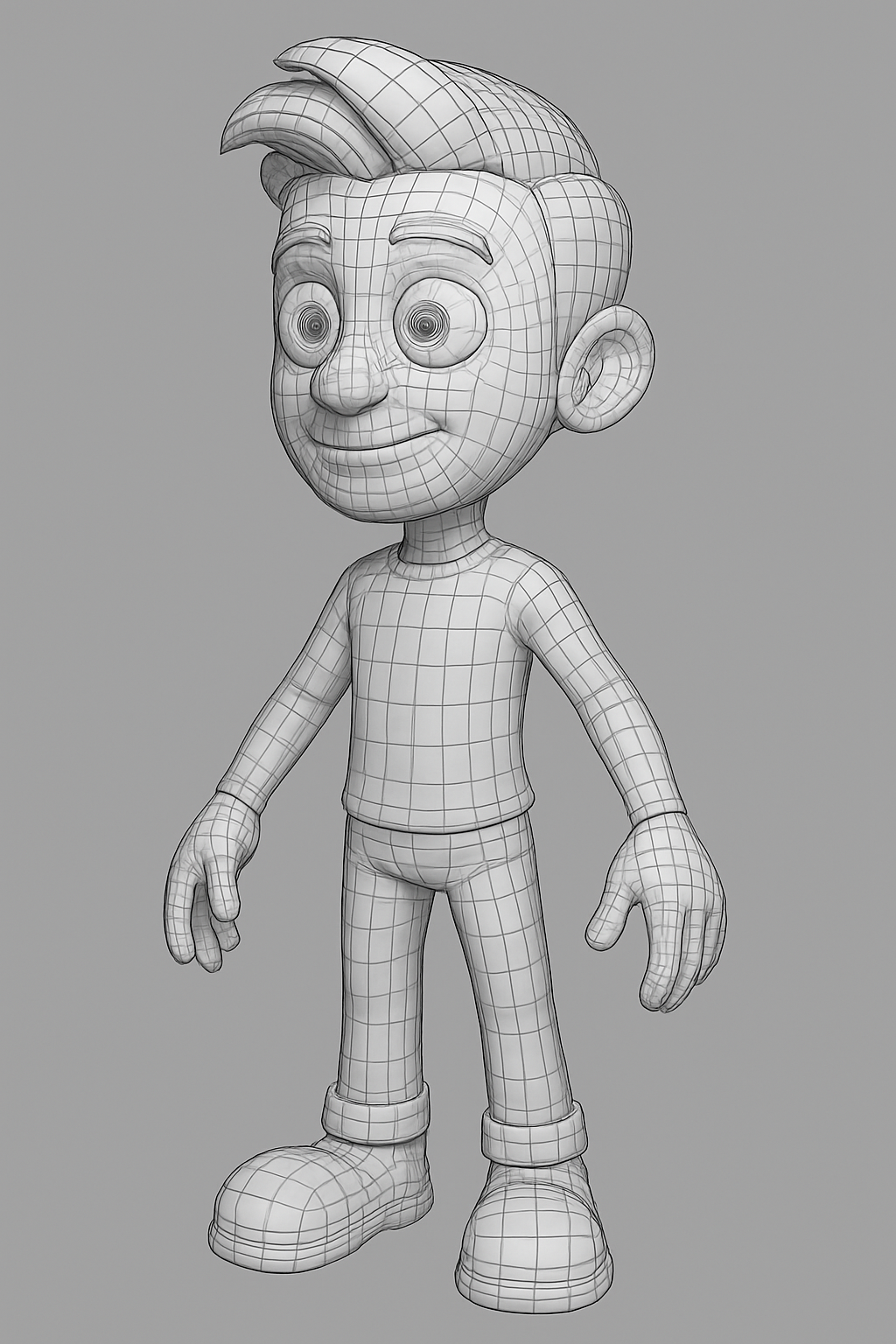
3D Modeling in Animation – Explained
3D modeling is a cornerstone of modern animation, video games, and visual effects. It involves creating three-dimensional digital representations of characters, environments, objects, or props that can be animated, textured, and rendered. Unlike traditional 2D drawings, 3D models have depth, volume, and can be manipulated in a virtual 3D space, making them highly versatile for both film and interactive media.
Key Stages of 3D Modeling in Animation
-
Concept Design
Artists start with sketches or concept art to define the model’s look, proportions, and style.This ensures the 3D model aligns with the overall animation vision.
-
- Modeling
Using software, artists create the 3D mesh by manipulating vertices, edges, and faces.
Models can be high-poly (for detailed film-quality assets) or low-poly (optimized for games).
- Modeling
- Sculpting & Refinement
Advanced sculpting tools allow for intricate details like wrinkles, scales, or muscle definition.Refining ensures realism or stylization as per the animation’s style.
- Texturing & UV Mapping
UV mapping unwraps the 3D surface so textures can be applied accurately.Texturing adds color, patterns, and material properties like metal, fabric, or skin. - Rigging & Animation Prep
Skeletons and joints are added to models so animators can move them naturally.Proper rigging is crucial for realistic or expressive animation - Optimization
For games or VR, models are optimized to balance visual quality and performance.
Why 3D Modeling Matters in Animation
3D modeling forms the visual backbone of any animation project. It allows animators to create flexible, reusable assets and ensures consistency across scenes. Without well-designed 3D models, animation cannot achieve realism, stylization, or interactive functionality needed for modern films and games
Pros of 3D Modeling in Animation
- Realism & Depth – 3D models provide accurate dimensions, lighting, and perspectives.
- Flexibility – Models can be animated, modified, or reused across multiple projects.
- Enhanced Creativity – Artists can experiment with unique shapes, textures, and materials.
- Integration with Other Tools – Works seamlessly with animation, rendering, VFX, and game engines.
- Efficiency in Production – Once a model is created, it can be replicated, reused, or modified without redrawing.
- Supports Interactivity – Essential for games, VR/AR, and simulations where user interaction is key.
Conclusion
3D modeling is an essential skill in modern animation that bridges art and technology. By creating detailed digital assets, animators can craft immersive worlds, believable characters, and dynamic objects that captivate audiences. Mastering 3D modeling not only improves visual quality but also enhances workflow efficiency, creativity, and versatility across animation, games, and interactive media.
Thumbnail
A thumbnail for this article could feature a split-screen visual: on one side, a wireframe 3D model, showing the mesh structure, and on the other side, a fully textured, colored 3D character or environment. The background could include a digital workspace with a stylus, graphics tablet, and modeling software interface, instantly conveying the idea of creation and transformation from concept to polished 3D asset.


